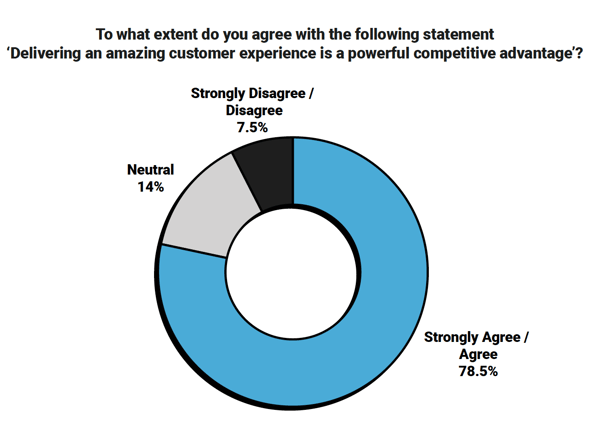We all know what CX is here. Most of us know what EX is too. But do we know what ROX is? The chances are that knowing the term Return on Investment shortens to ROI, then you can work out that ROX relates to Return on Experience, but what does that actually mean?
To know that, we first have to make sure we're completely up to speed with what CX and EX are. With that in mind...
What is CX?
CX stands for Customer Experience. Yes, in this world, X stands for a word that begins in E.
Customer Experience is one of the most important aspects of your marketing, and encompasses every step of a consumer's journey with your business, from start to finish. It also includes elements of the experience that are harder to quantify, including how the customers felt about you before the journey, and how thy felt during and subsequently afterwards.
Essentially, these days it's not enough to have a good product; you need to provide an experience that's as good, if not better than your competition. By providing a great CX, you can foster advocacy in your buyers, who will more or less become advertisers for you, and become more likely to make repeat purchases.
The vast majority (78.5%) of respondents in our 2021 Customer Experience Trends & Insights report agreed that an amazing customer experience provides a powerful competitive advantage.

What is EX?
EX is short for Employee Experience, and going by what CX means, you can probably work out that EX is about the experience - good or bad - that an employee of your company has while working for you.
EX never really used to be a thing that companies worried about too much, but with the new age of amplified social consciousness, it has become more and more prevalent and businesses have started to employ entirely new roles dedicated entirely to improving the employee experience.
It may sound like a silly fad (treating employees right and all that), but research has shown that happy employees are twice as productive as those who aren't, in regards to customer satisfaction, and that companies who focus on employees generate 25% more revenue than those who don't!
So they're the two things that you likely would have been all too familiar with, but now knowing that...
What is ROX?
Return on Experience helps businesses measure the impact of their customer and employee experience (and to a degree LX, but that's a story for another day). ROX can be used with both B2B and B2C businesses, as it helps them track their investments, and give the company an unparalleled view that offers insight that siloed businesses could only dream of.
The data and analytics tools that business leaders now have access to are invaluable, as they help them decipher and understand whether or not the experiences they are creating are leading to the results that they're looking for. The leaders are now able to see clearer connections between customer and EX, which is a crucial part of putting together actionable ROX metrics.
Why is ROX important?
In a survey from PwC, it was found that 35% of respondents found traditional TV ads to be their go-to form of advertising. This all sounds very old-school, but a deeper dive shows that millennials and Gen Zers are far more genuinely engaged by social media advertising that allows them to interact with brands.
In other words, the experience is becoming more vital for marketers to consider. The survey also found that marketers consider real-life testimonials for authentic and worthwhile, which is something that can be easily leveraged in comments sections and the like.
Good testimonials come from customers who have had a good experience, and for the most part, good customer experiences come when the employees are also having good experiences.
Traditional marketing, while still a viable form of advertising, needs to be heavily supplemented by investment into both CX and EX to provide the authentic journey.
How do you measure ROX?
Sadly, there's no one tool that can give you a number that tells you how good your ROX is... not yet anyway. To measure your ROX, you must first take a step back and see your company as one whole unit, see the bigger picture and not just the analytics.
You more or less have to look at the experiences that you're investing in and then subsequently measure the key metrics said experiences will impact.
So many aspects are relevant to measuring ROX, which makes it difficult to pinpoint. However, if you focus on the monetary value of these metrics - like time, cost saving, and/or sales conversion rates - then you can actually quantify your ROX and capture its value.
Calculating ROX involves measuring a wide range of costs - including the direct cost of your technology - along with implementation, training, maintenance and more.
